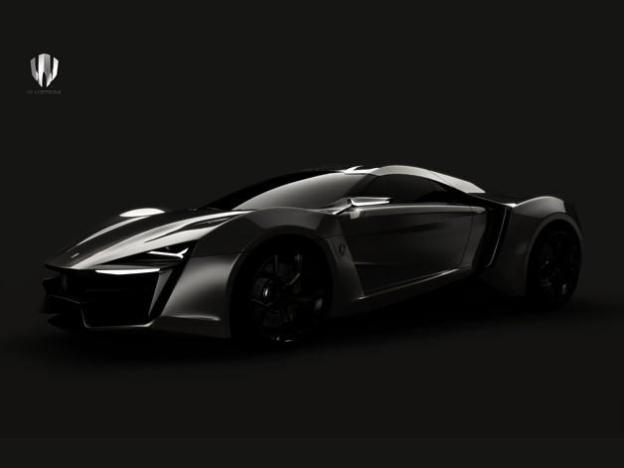
Say what you will about the Middle East and its denizens’ lavish lifestyles, but with region’s penchant for exotic cars — and where Lamborghinis, Bugattis and the like are as commonplace as your everyday Camry or Civic — no other region in the world is better for scoping out some of the world’s most exotic (and expensive) supercars. It’s funny then that no true “supercar” can claim to originate from the oil-rich region. Well, that’s about to change.
At a recent event held in the city of Beirut, Lebanon, W Motors revealed that it will create two models, the Hyper-Sport and the Super-sport. These two supercars will carry the distinction of being the first of their kind to ever be produced in the Middle East.
Other than the darkened renders we don’t have much to go off of in terms of specs or pricing, but according to W Motor’s Ralph Debbas, the cars will feature a carbon-fibre monocoque with a mid-mounted, 550kW, twin-turbo six-cylinder engine capable of rocketing from 0-62 in just 2.8 seconds, and a top speed of 239 mph.

But it doesn’t stop there. Debbays suggest that the upcoming extreme machines are nothing short of revolutionary, claiming that both the Hyper-Sport and Super-Sport will be the “most exclusive, luxurious, technologically advanced hyper-cars in the world” and feature brand-new technologies never featured on a car before, like diamond incrusted LED taillamp and a fully-functional holographic display.
While we can’t attest to how “technologically advanced” the Hyper-Sport and Super-Sport will actually be, W Motors says it plans on only producing five copies altogether making these cars (if they actually make it to production) extremely rare.
According to the company’s press blast, the cars will be built with the help of Austrian manufacturer Magna Steyr and Porsche tuning specialists RUF, and will debut in Dubai this December.


